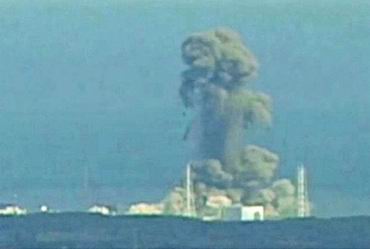
|
|

|
|
| May 13, 2024 |
|
Tsunami: Japan feared ‘devil’s chain reaction’ 
Japan's prime minister ordered workers to remain at the tsunami-crippled Fukushima nuclear plant nearly a year ago as fears mounted of a "devil's chain reaction" that would force tens of millions of people to flee Tokyo, a new investigative report shows.
Then-Premier Naoto Kan and his staff began referring to a worst-case scenario that could threaten Japan's existence as a nation around three days after the March 11 earthquake and tsunami, according to the report by a panel set up by a private think-tank. That was when fears mounted that thousands of spent fuel rods stored at a damaged reactor would melt and spew radiation after a hydrogen explosion at an adjacent reactor building, according to the panel report. Yukio Edano, then Japan's top government spokesman, told the panel that at the height of tension he feared a "devil's chain reaction" in which the Fukushima Daiichi plant and the nearby Fukushima Daini facility, as well as the Tokai nuclear plant, spiraled out of control, putting the capital at risk. Kan, who stepped down last September, came under fire for his handling of the crisis, including flying over the plant by helicopter the morning after the disasters hit -- a move some critics said contributed to a delay in the operator's response. Kan, 65, has spoken of how he was haunted by the specter of a crisis spiraling out of control and forcing the evacuation of the Tokyo greater metropolitan area, 150 miles away and home to some 35 million people. The private Rebuild Japan Initiative Foundation report also said Japan's government withheld information about the full danger of last year's nuclear disaster from its own people and from the United States, putting U.S.-Japan relations at risk in the first days after the accident. The report, compiled from interviews with more than 300 people, delivers a scathing view of how leaders played down the risks of the meltdowns at the Fukushima Dai-ichi nuclear plant that followed a massive March 11, 2011 earthquake and tsunami. It paints a picture of confusion during the days immediately after the accident and says the U.S. government was frustrated by the scattered information provided by Japan and was skeptical whether it was true. (Source: MSNBC) Story Date: March 5, 2012
|